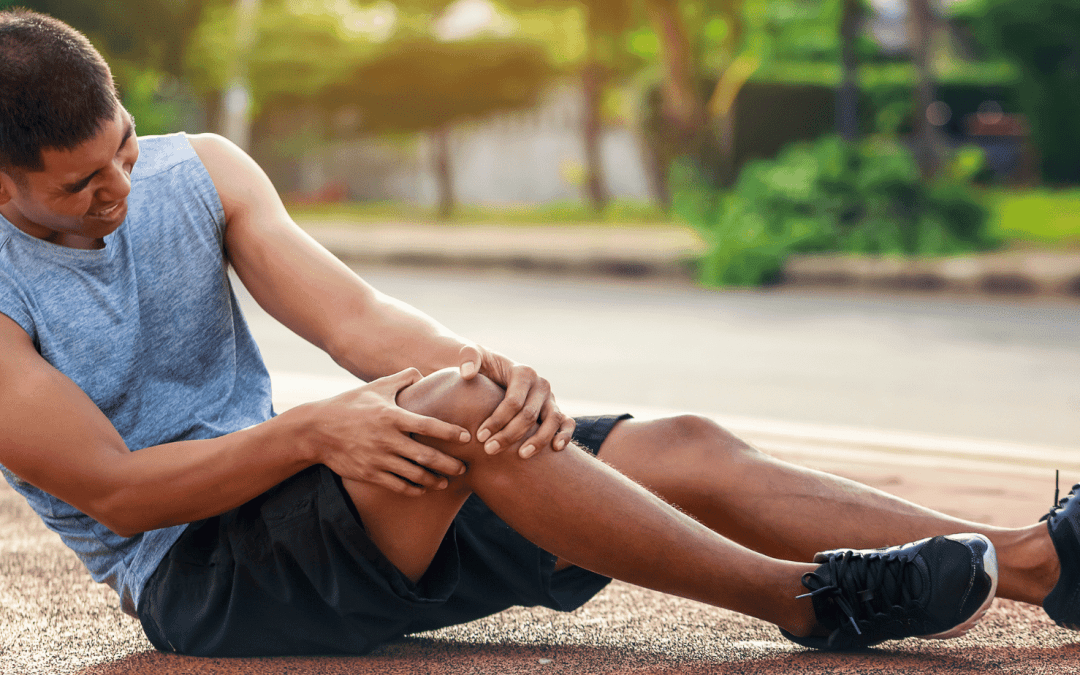liotibial Band Syndrome – ITBS (also known as ITB Friction Syndrome) is an overuse injury of the lateral knee. Pain often presents as a localised, burning sensation – usually following an increase in load or activity.
This injury is commonly seen in runners and cyclists. Historically the injury was believed to be caused by an area of friction leading to inflammation and pain, however recent studies indicate it is more due to compressive forces exerted by the ITB – a thick band of tissue which runs down the outside of the thigh. Physiotherapy management of ITBS is consistently a first line of treatment with excellent results achieved with a multifaceted approach.
Anatomy & Pathophysiology
Historically, Iliotibial band Syndrome was thought to be caused by a friction as the ITB moved anteriorly and posteriorly over the lateral femoral condyle. The ITB is a fibrous thickening of the circumferential fascial sleeve that envelopes the whole thigh – rather than a discrete band. It arises from the iliac crest via fibrous connective tissue from the gluteus maximus and tensor fascia latae muscles and inserts into the lateral tibial plateau onto Gerdy’s tubercle. The ITB is moreover tightly anchored to the entire femur – connected to the linea aspera by an intermuscular septum. This makes the historical belief that lateral knee pain was caused by a friction as the ITB moved anteriorly and posterior over the lateral femoral condyle unlikely. The current belief is that symptoms are provoked due to a repetitious shortening of the ITB structure causing a compression of lateral structures just proximal to the knee joint.
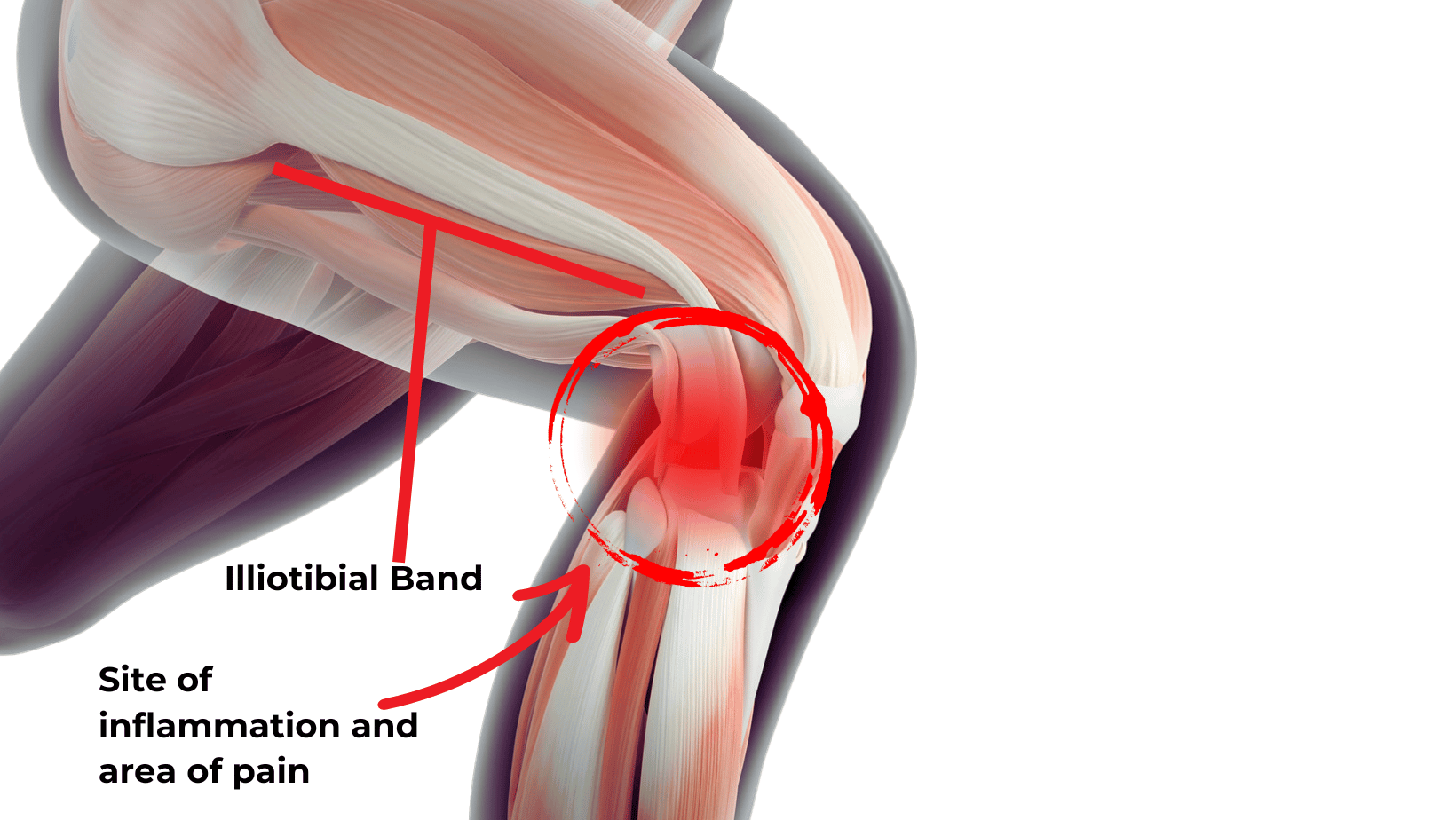
Risk factors
- Weakness and poor control of hip & knee musculature, specifically weak hip abductors and external rotators.
- Poor/ inadequate footwear- shoes that lack adequate arch support/cushioning
- Training errors – sudden increase in load/ intensity/inadequate rest
- Poor running biomechanics
- Previous injury/improper rehabilitation
Physiotherapy Management
A combination of treatment interventions are used to treat ITBS with long term benefits leading to return of full function. Initially physiotherapy will focus on symptom relief using soft tissue massage, manual therapy, foam rolling and other modalities such as ice or heat where needed. The physiotherapist will also include education and an exercise program aimed at restoring function and correcting biomechanics. (Wong, 2009)
Load management: In almost all cases of ITBS, some level of activity modification is required to prevent further aggravation of the patients’ symptoms (Lazenby & Geisler, 2017).
Manual therapy: Hands-on techniques such as massage, myofascial release, and joint mobilizations may be used to alleviate muscle tightness, improve tissue length.
Education: Education and advice regarding load management, aggravating activities, training loads & technique are all essential in assisting to relieve symptoms and progress to a graded return to full activity.
Exercise therapy: Treatment will be tailored specifically to the patient to strengthen the weakened muscles, stretch tight structures such as gluteus maximus & tensor fascia lata and improve the control of the entire lower kinetic chain. Exercises often focus on gluteus maximus/medius, quadriceps & pelvic control. The improvements in strength and motor control allow progression to functional tasks such as squatting, running and stairs leading to long term alleviation of ITB syndrome symptoms.
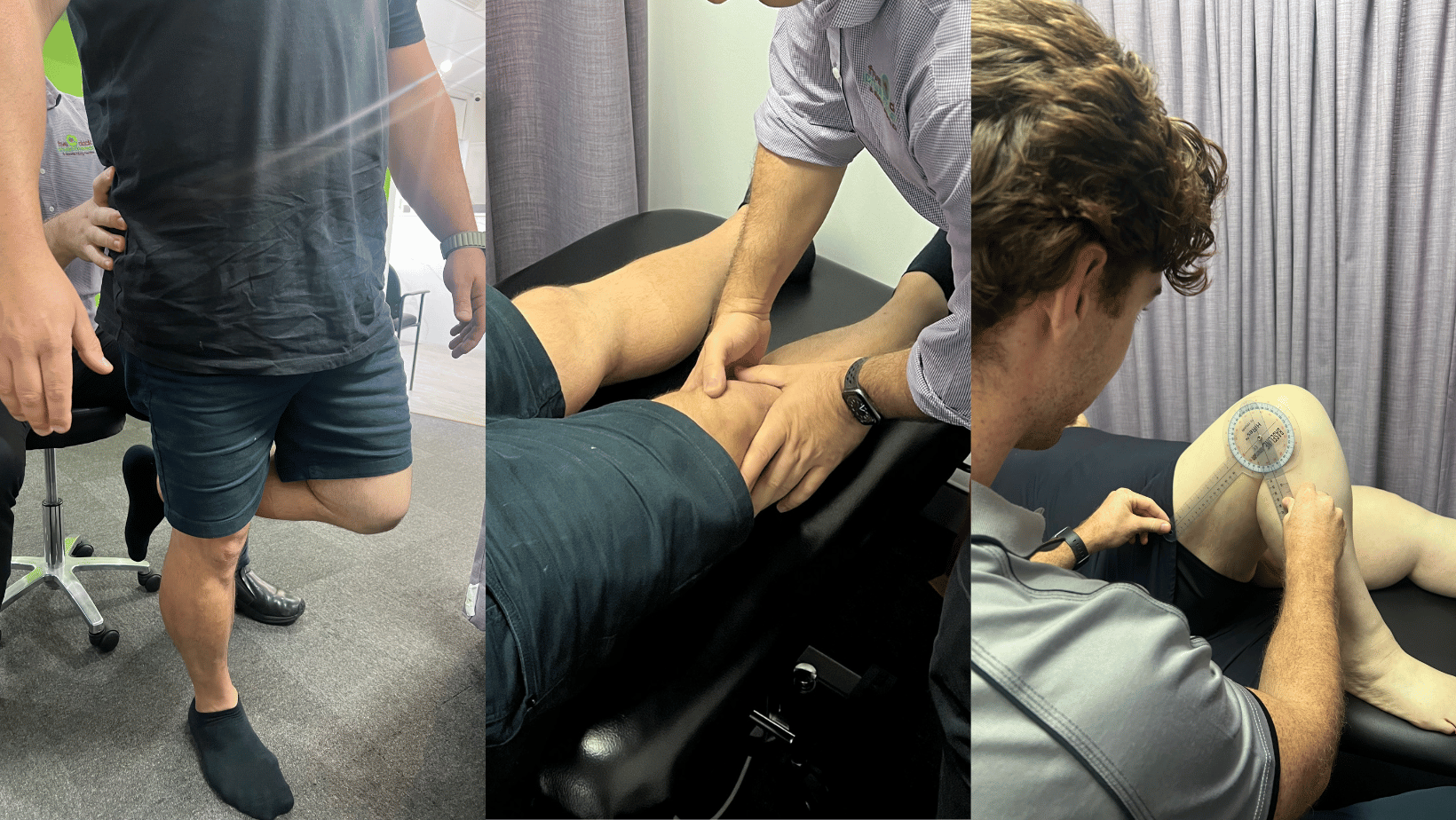
What’s the evidence say?
Continued research into ITBS, such as Hadeed & Hapscott (2023), has suggested that the causing source of pain in ITBFS is likely multifactorial – with possible theories such as the compression of a fat pad deep to the distal ITB, as well as chronic inflammation of a fluid-filled ITB bursa. With this altered pathophysiology further research has shown a focus on reducing the compressive forces via altering muscle mechanics, strength training and managing load. Noehren et al (2007) has shown the combined motions of knee internal rotation and increased peak hip adduction were associated with increased compressive forces. Studies into treatment by Fredericson et al (2000) & van der Wolp et al (2012) demonstrated both specific strengthening and stretching to improve symptoms. Currently there is no evidence for altered running mechanics however reducing running to non-painful levels is beneficial, highlighting the possibility of running technique as an important component of treatment. A multifaceted treatment is credited with achieving the best results with a study from Fredericson et al (2000) showing 96% of subjects returned to running within 6 weeks following appropriate treatment.
Exercise
Hip Abductor Strengthening (Clam Exercise):
Aim: To strengthen the hip abductor muscles and lateral hip stabilisers, targeting the gluteus medius.
How: Lie on one side with hips and knees bent. Keeping the feet together, open the top knee upwards while keeping the pelvis stable. Hold for a few seconds, then slowly lower the knee back down. Repeat for several repetitions on each side.
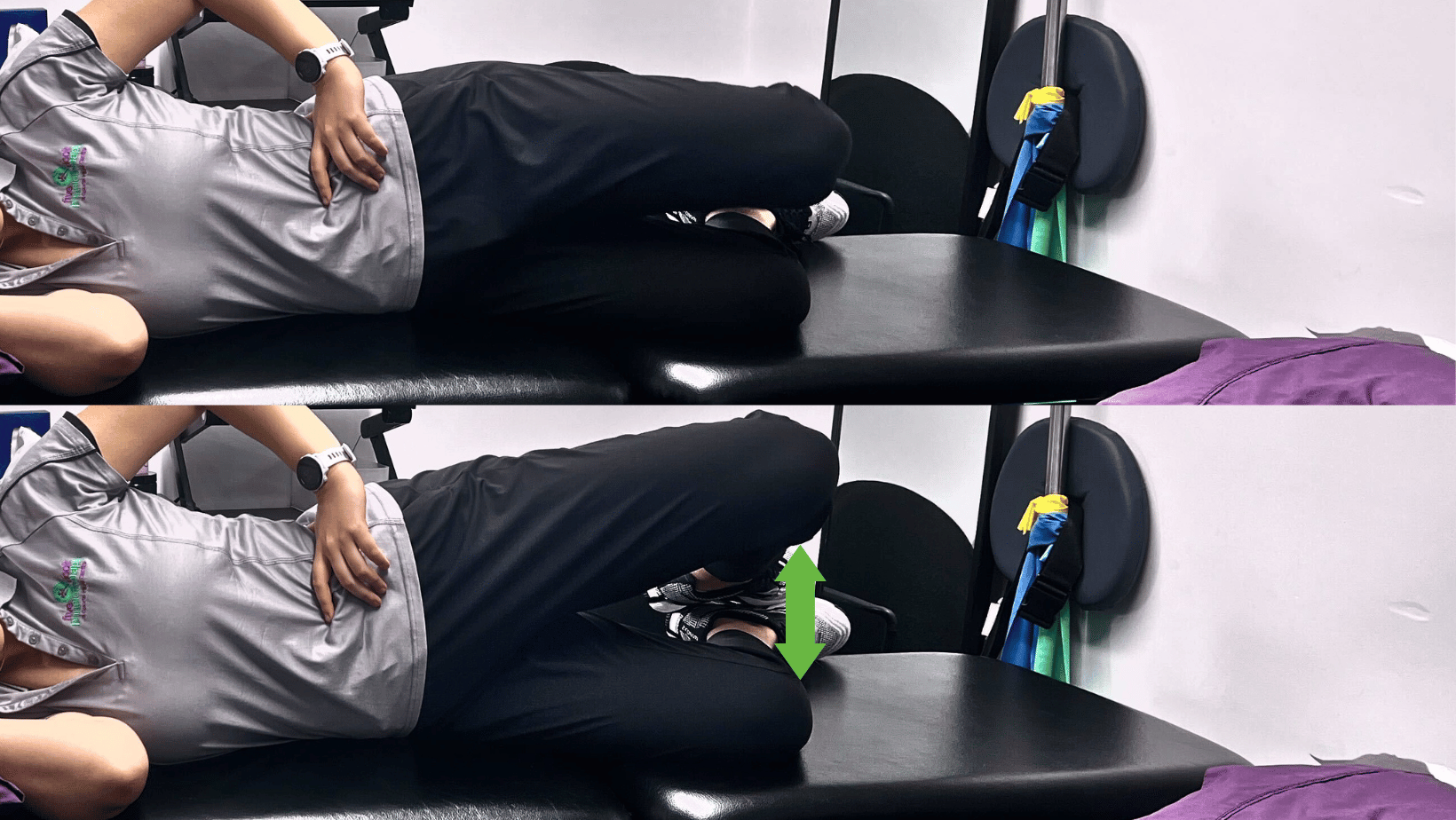
Foam Rolling:
Aim: To release tension and tightness in the muscles surrounding the IT band.
How: Lie on your side with the foam roller placed under the outer thigh just below the hip. Using your arms for support, slowly roll along the outer thigh towards the knee, pausing and applying gentle pressure on any tender spots. Continue for 1-2 minutes on each leg.
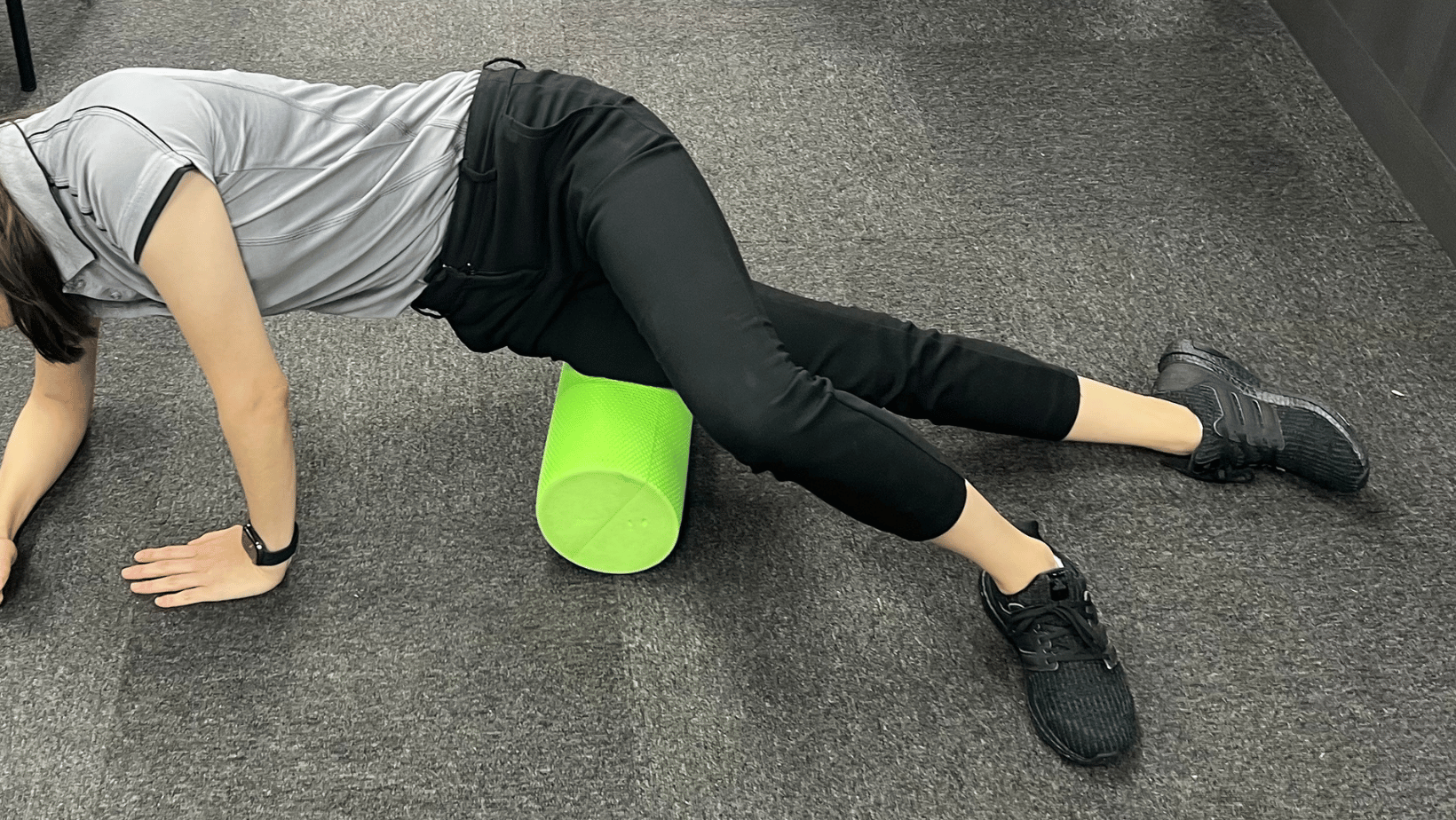
Scooters (on Pilates Reformer):
Aim: To strengthen the thighs, glutes, hamstrings, lateral hip stabilizers and improve core stability and balance.
How: Stand on the side of the reformer facing the footbar in a 1/4 lunge position. Place one leg on the carriage with your foot on the shoulder pad. Hold your stance leg still, and drive the leg back into the shoulder pad as if you are ‘pedalling a scooter’. Repeat for reps & adjust spring tension changing resistance.

If you or someone you care for has an injury, a flare up, requires some rehabilitation or experiences an increase in pain, give the clinic a call on 9713 2455 or book online.

